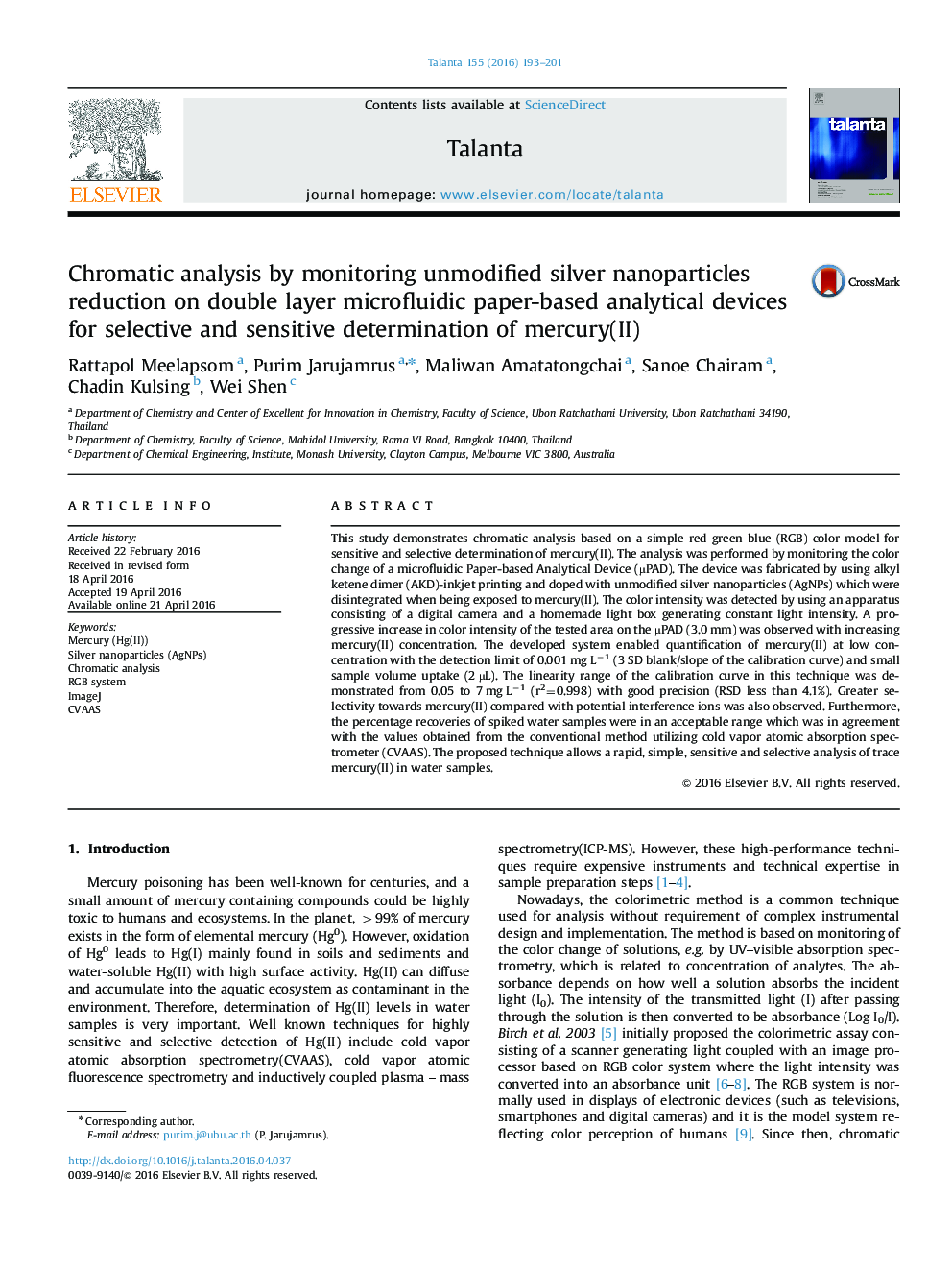| Article ID | Journal | Published Year | Pages | File Type |
|---|---|---|---|---|
| 1242430 | Talanta | 2016 | 9 Pages |
•A simple and effective chromatic analysis system for mercury detection was developed.•The system is based on color change monitoring AgNPs disintegration by camera.•The AgNPs were doped onto microfluidic paper-based devices.•This approach allows reliable of analysis mercury(II) in water samples under non-laboratory conditions.
This study demonstrates chromatic analysis based on a simple red green blue (RGB) color model for sensitive and selective determination of mercury(II). The analysis was performed by monitoring the color change of a microfluidic Paper-based Analytical Device (µPAD). The device was fabricated by using alkyl ketene dimer (AKD)-inkjet printing and doped with unmodified silver nanoparticles (AgNPs) which were disintegrated when being exposed to mercury(II). The color intensity was detected by using an apparatus consisting of a digital camera and a homemade light box generating constant light intensity. A progressive increase in color intensity of the tested area on the µPAD (3.0 mm) was observed with increasing mercury(II) concentration. The developed system enabled quantification of mercury(II) at low concentration with the detection limit of 0.001 mg L−1 (3 SD blank/slope of the calibration curve) and small sample volume uptake (2 µL). The linearity range of the calibration curve in this technique was demonstrated from 0.05 to 7 mg L−1 (r2=0.998) with good precision (RSD less than 4.1%). Greater selectivity towards mercury(II) compared with potential interference ions was also observed. Furthermore, the percentage recoveries of spiked water samples were in an acceptable range which was in agreement with the values obtained from the conventional method utilizing cold vapor atomic absorption spectrometer (CVAAS). The proposed technique allows a rapid, simple, sensitive and selective analysis of trace mercury(II) in water samples.
Graphical abstractFigure optionsDownload full-size imageDownload as PowerPoint slide
